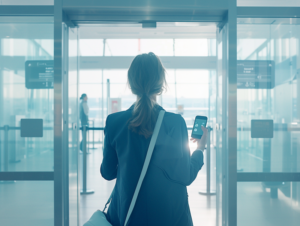Singapore’s Changi Airport has introduced biometric technology to streamline its immigration process, enabling passengers to pass through immigration in as little as 10 seconds. The Immigration & Checkpoints Authority (ICA) of Singapore reports that since facial and iris recognition were fully implemented on September 30, the average time to clear immigration has been cut by 60 percent, from 25 seconds previously.

The system supports passport-free immigration at all four passenger terminals for Singaporeans, permanent residents, and long-term pass holders, who can now depart and arrive using only biometric verification. Foreign visitors are required to present passports upon arrival but can access passport-free clearance on departure after registering their biometric data at manual immigration counters.
According to the ICA, nearly 1.5 million passengers had used this biometric clearance process as of October 15, as the airport approaches pre-pandemic traffic levels with close to 50 million passengers over the past year.
Currently, the biometric system is operational at Terminal 3, with plans to extend it across all Changi terminals, Seletar Airport, and the Marina Bay Cruise Centre by December 2024. It’s part of Singapore’s New Clearance Concept, launched in May, which aims for 95 percent of travelers to use automated biometric lanes by early 2026, potentially reducing wait times by up to 40 percent, according to the ICA.
Changi Airport has seen steady growth in passenger numbers, handling 5.4 million travelers in September 2024, marking a 10.8 percent increase compared to the same month in 2023. ICA Commander Alan Koo asserts that the new system will enable staff to focus more on security profiling as the volume of travelers grows and the workforce ages. Passengers are still advised to carry passports for checks at international destinations, ensuring compatibility with varying border requirements.
Singapore’s Changi Airport has historically been a pioneer in implementing biometric technology to enhance passenger experience and streamline airport operations.
A significant milestone came in 2017 with the opening of Terminal 4, which marked the first extensive use of facial recognition technology at Changi Airport. Idemia partnered with Changi to deploy an integrated passenger processing system that implemented biometric capture for automated bag drop, immigration, and boarding processes.
Since then, Changi Airport has continuously expanded and improved its biometric capabilities. By 2022, the airport had implemented automated immigration lanes for Singaporeans, residents, and eligible foreign visitors who had registered their biometrics. The Immigration and Checkpoints Authority (ICA) introduced the Multi-Modal Biometrics System (MMBS), capturing iris, facial, and/or fingerprints of arriving and departing travelers.
Sources: Bloomberg BNN, TTW
–
October 25, 2024 – by Ali Nassar-Smith








Follow Us